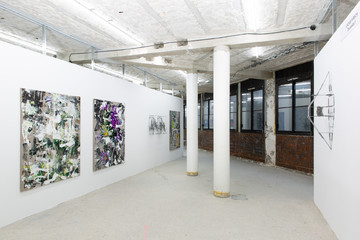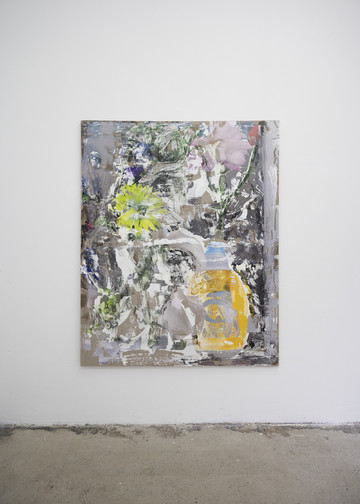
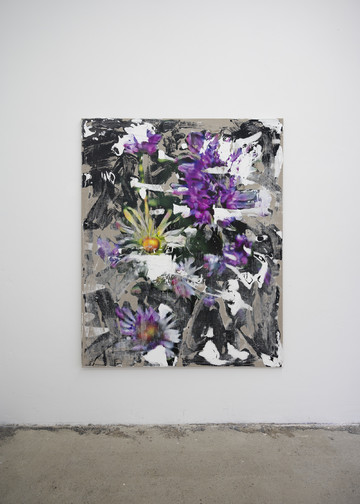
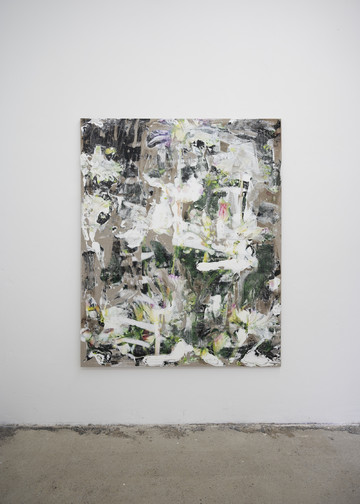
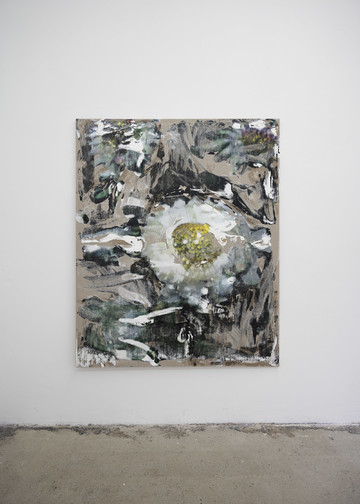
Dorota Gawęda and Eglė Kulbokaitė’s practice of weaving together seemingly disparate fields - ecology and technology, science and magic, nonhuman intelligence and shared speculation - is reflected in their works on canvas, in which they collaborate with artificial intelligence. In the Seasons series, algorithmically-induced images of still lifes are conjured up by a generative adversarial network (GAN), an AI model that pits two neural networks against each other to generate synthetic data. The numeric titles of the series refer to file names of the visuals created through repetitive image breeding. A selection of mutant imagery is collaged into new assemblages and then applied onto canvas through layering of gesso brush strokes in a very physical and gestural process. Seasons rely on the sentimentality of artificially bucolic depictions, reflecting on the historical representation and framing of the natural through the Western painting tradition and algorithmic systems which increasingly structure our understanding of the surrounding world. “The ‘natural’ is a synthetic, manufactured concept,” suggest the artists. With their works on canvas, Gawęda and Kulbokaitė are “considering how artists participate in this construction throughout history and with emerging technologies, as well as our own position in this system.”
Dorota Gawęda (1986, Lublin, Poland) and Eglė Kulbokaitė (1987, Kaunas, Lithuania) are a duo of artists based in Basel, Switzerland. They are both graduates of the London Royal College of Art (2012) and founders of the Young Girl Reading Group (2013-2021). Their work blends performance, painting, sculpture, fragrance and video installations and they maintain a practice based on research that combines domains as disparate as ecology and technology, science and magic, non-human intelligence and shared speculation. The duo has exhibited notably in Centre Pompidou, Paris (2023); Kunsthalle Mainz, (2023) (Germany); Ar/Ge Kunst, Bolzano (2022) (Italy); Shedhalle, Zurich (2022) (Switzerland); Kunstraum Niederoesterreich, Vienna (2022) (Austria); Centre Culturel Suisse, Paris (2022); Kunstverein Hamburg (2021) (Germany); Istituto Svizzero, Palermo and Milan (2021) (Italy); Kunstverein Leipzig (2021) (Germany); Institut Suisse, New York (2020) (United States); Collection Julia Stoschek, Düsseldorf (2020) (Germany); Lafayette Anticipations, Paris (2019) and Palais de Tokyo, Paris (2018). They were awarded the Allegro Artist Prize 2022, the Arts at CERN Collide residency prize in 2022 and the Swiss Performance Art Award 2021.
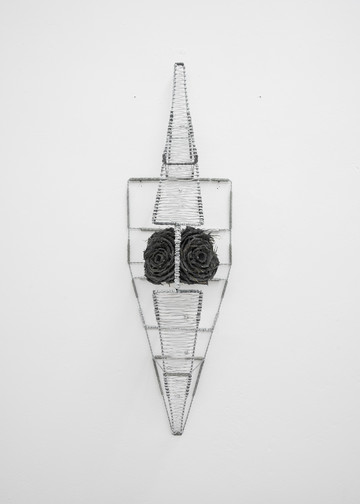
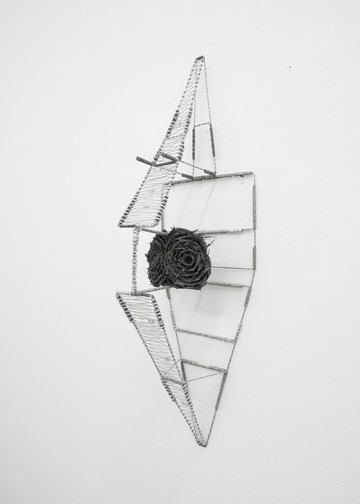
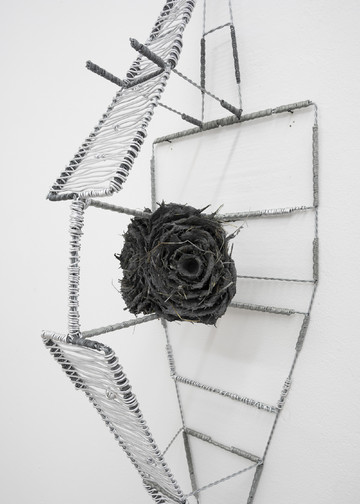
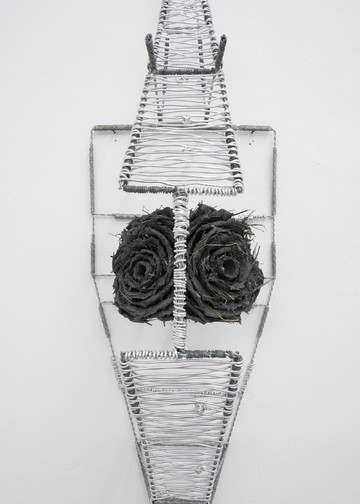

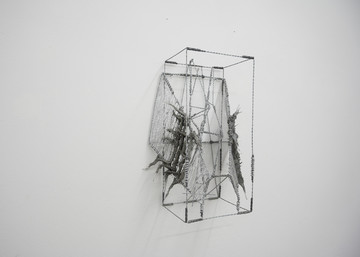
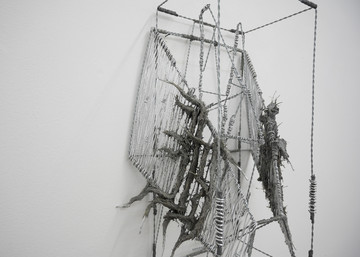
Sami Schlichting’s sculptures dwell in ambiguity. Some of the sculptures are boisterous with extended limbs, reaching out like dendrites, other looking up with reciprocal curiosity, as if peering back. Matter brought together with traces of that other thing, which we might call presence. The organic materials of straw and white mud are combined with metal parts, and the internal skeleton of wire. This is also where the idea of disjuncture comes in. The whole notion of juxtaposition – what third thing arises. In a sense, it is a form of alchemy, a process whereby the material acquires another, and indivisible immaterial status and presence other from what it was. The sculptures remind me of automatons, but with a form that is more organic, more unruly than we have come to understand the physical rules and forms of artificial life. Frankenstein’s monstrosity was in part based in his design as a misaligned imitation of man. These sculptures are not based on the outlines of the human image, not based in the thought-structure or form of anthropomorphism. Rather, it is as if the form and spirit were arrived at in close dialogue between intention and the properties of the material. There is in such a process a combination between intention and improvisation. A rhythm of attention, a concentration a way of seeing but also an attunement to that other thing which takes over. (…)
- From a text by Fatima Hellberg
Sami Schlichting (born 1987 in Cuxhaven, Germany) lives and works in Düsseldorf. Sami Schlichting graduated from Kunstakademie Düsseldorf in 2016, where he studied with Andreas Schulze and Rebecca Warren. His recent exhibitions include Swallow, Lucas Hirsch, Düsseldorf (2022), The Walls Have Ears, Project Space, LWL-Museum and Westfälischer Kunstverein, Münster (2021), Dungeons & Dasein, Lucas Hirsch, Düsseldorf (with Elin Gonzalez) (2020), Spoilage #2, curated by Wschod Gallery, Warsaw, SALTS, Basel (2019), Hereafter, Mélange, Cologne (with Cezary Poniatowski) (2019), RAW, Dumont Kunsthalle, Cologne (2019), Where Do Streams Run To?, Damien & The Love Guru x Lucas Hirsch, CFAlive, Milan (2019), Prati bagnati del monte Analogo, Neuer Essener Kunstverein, Essen (2018), Jokes to run a family, Lucas Hirsch, Düsseldorf (2018).

